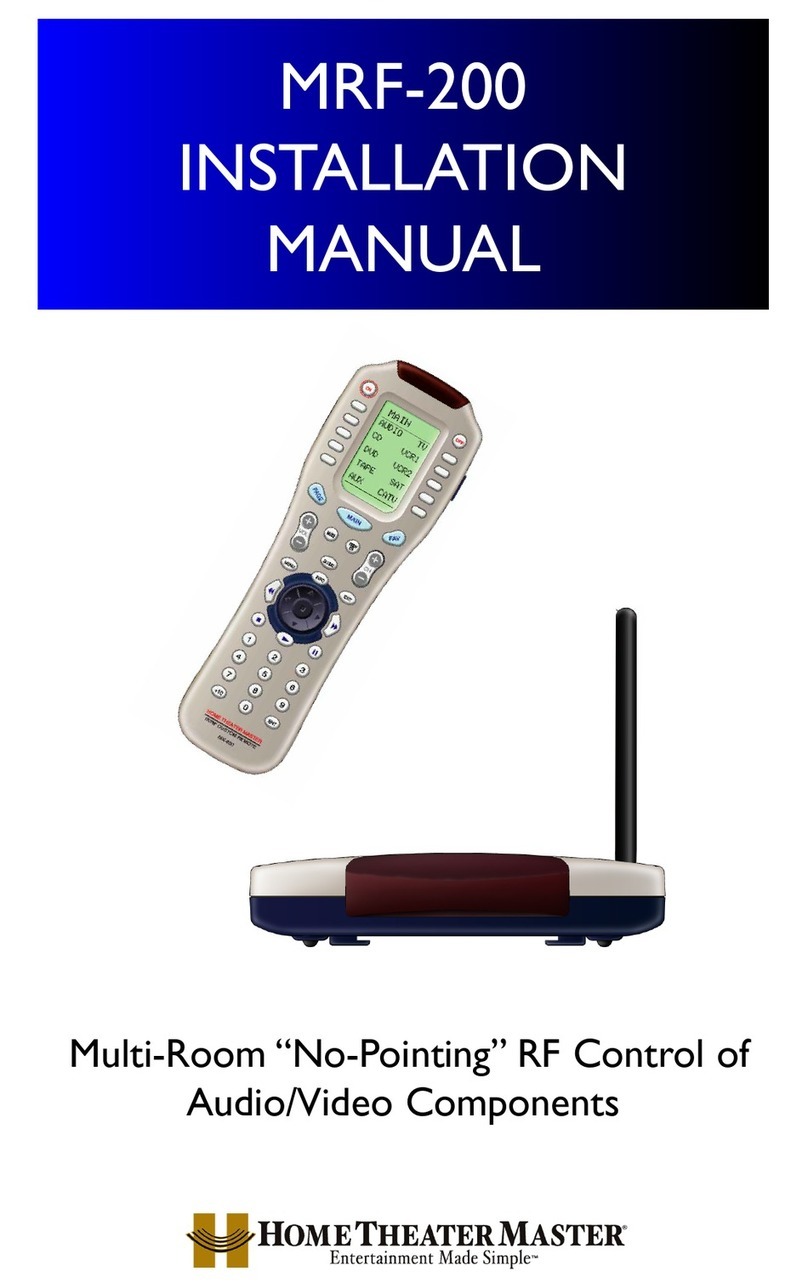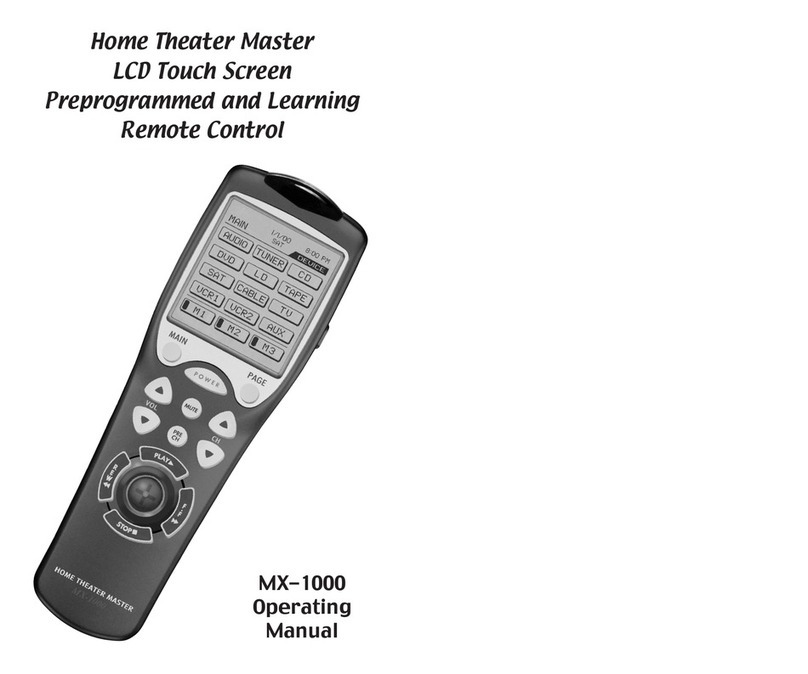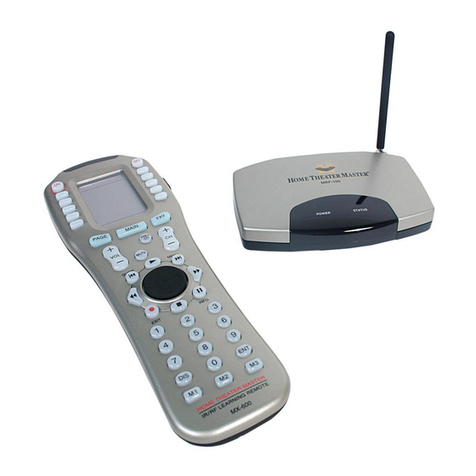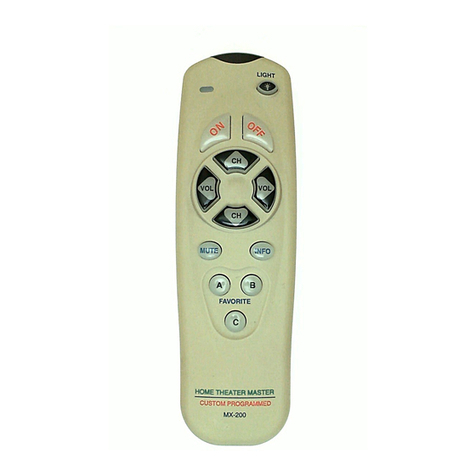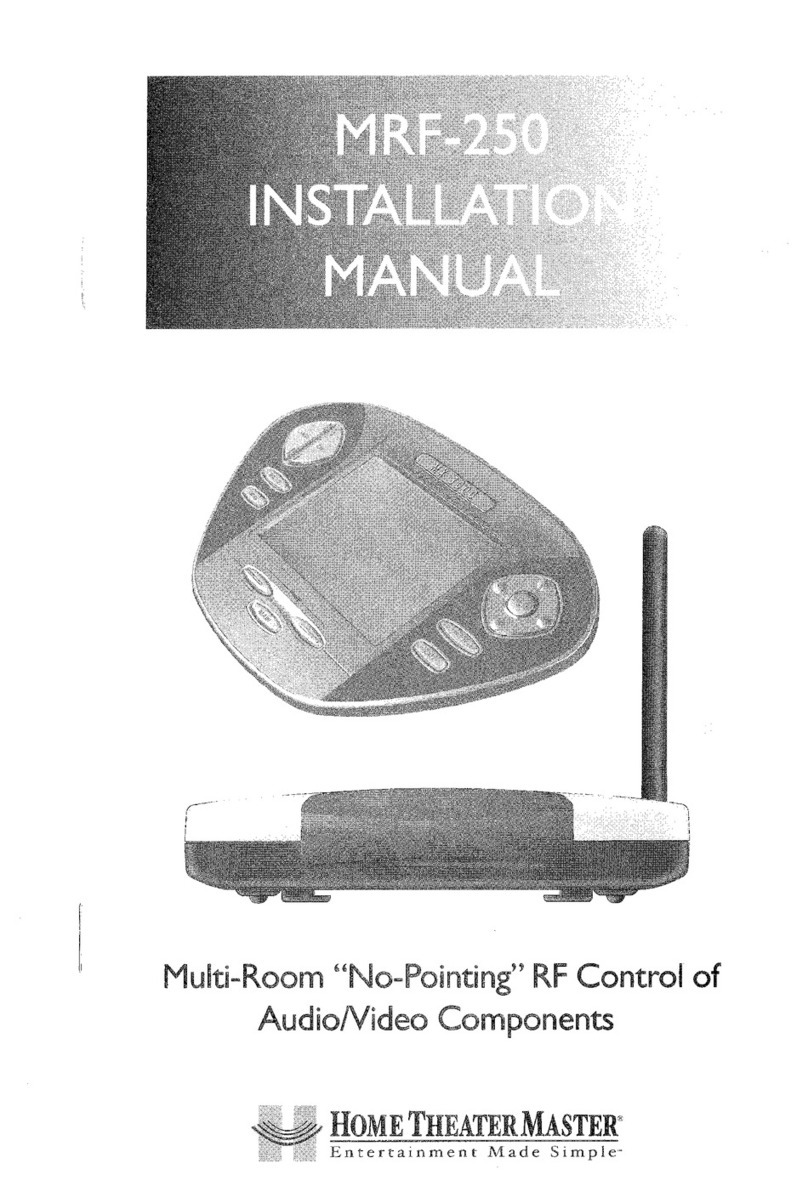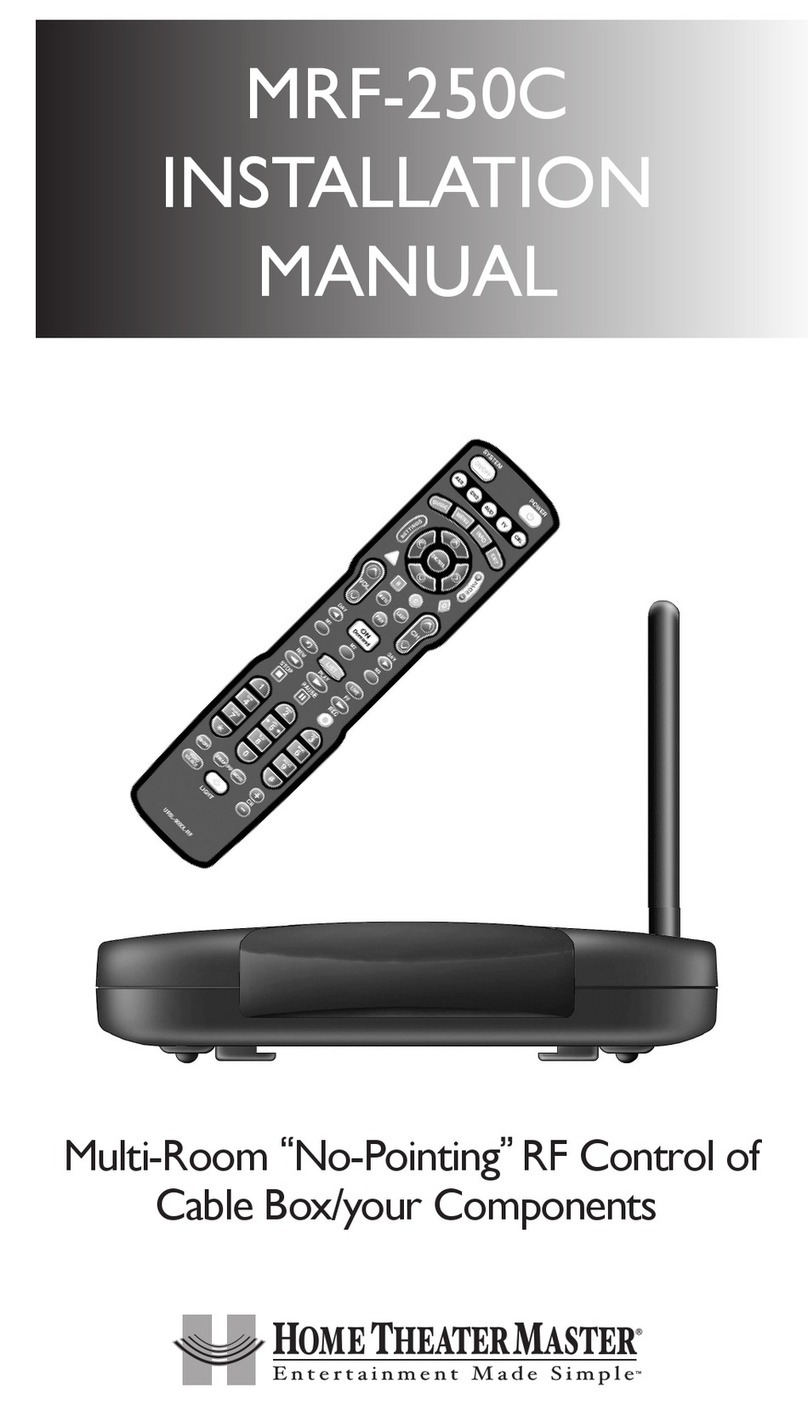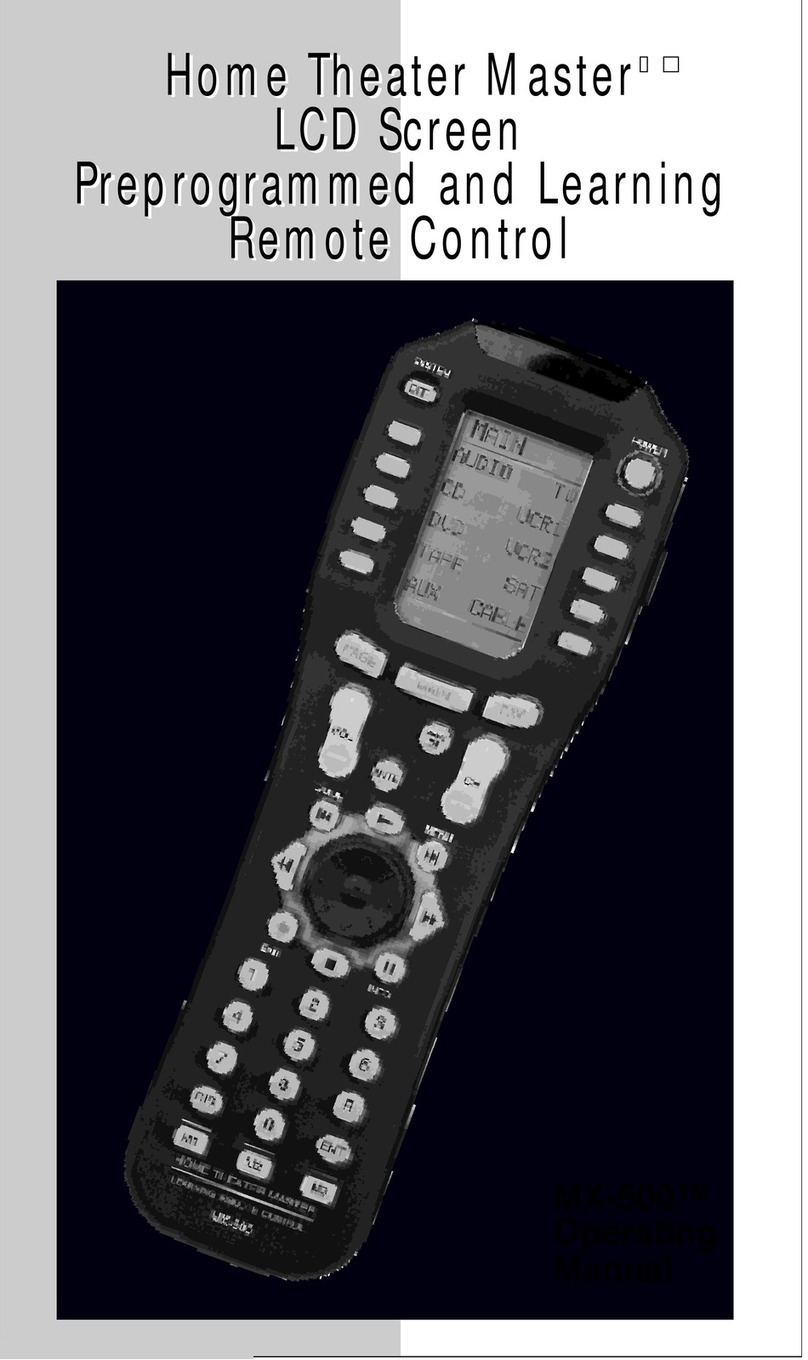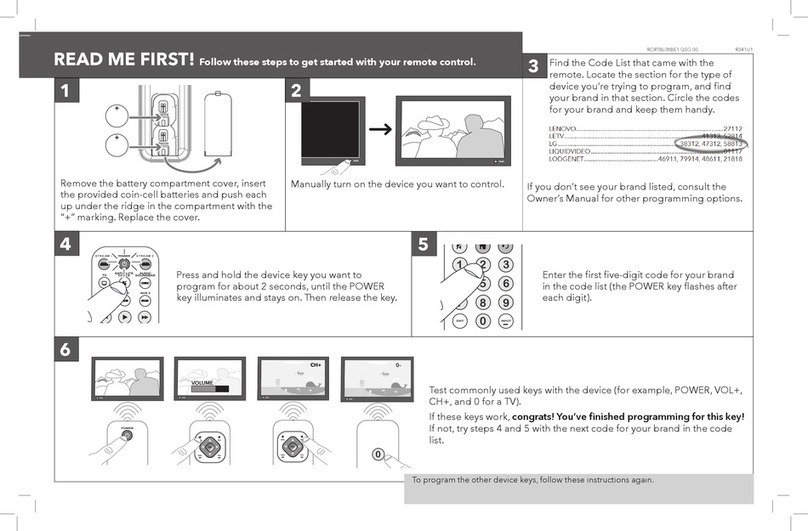PPaaggee66
MMRRFF--225500BBAASSEESSTTAATTIIOONN
mounting plate slides apart from the receiver, screws to the wall or cabinet
with the enclosed screws, then the receiver is slid back into place.
SStteepp33--CCoonnnneecctttthheePPoowweerrSSuuppppllyyaannddIInnsseerrtttthheeBBaatttteerriieess
Connect the 9V power supply to an active UNSWITCHED AC outlet. The MRF-
250 must always be powered up to operate.The red POWER LED should light.
Insert the batteries in the MX-3000 remote control.
SStteepp44--TTeesstttthheeMMXX--33000000
Observe the MRF-250’s STATUS LED blinking while you press and hold a pro-
grammed button (one with an actual command).This tells you that the MRF-
250 is receiving the RF commands of the MX-3000. However, if the LED con-
tinues to flicker after you release the button, you are receiving RF Interference
and you must move the MRF-250 to another location.
SStteepp55--OOrriieenntttthheeAAnntteennnnaaffoorrOOppttiimmuummRRaannggee
If you need to extend the range of the remote, try adjusting the angle of the
MRF-250 receiving antenna via it’s pivoting ball mount.
SStteepp66--TTeessttOOppeerraattiioonnWWiitthhoouuttFFllaasshheerrss
With the MX-3000’s IR output blocked by a jacket or pillow, test the control of
your components using just the Front Blaster. In most cabinets, the MRF-250’s
Front Blaster will control any A/V components in the same cabinet space by
reflections from the cabinet walls and doors. Make sure that the components
operate with the cabinet doors closed or open. If a component is placed too far
away from the front blaster, you will need to utilize the included Flashers plugged
into the MRF-250’s rear Flasher Line Output jacks.
If you have problems with components that are close to the Front Blaster, see
the next page and the section on Front Blaster Overload.
SStteepp77--CCoonnnneeccttFFllaasshheerrssttooOOuuttooffSSiigghhttAA//VVCCoommppoonneennttss
IImmppoorrttaannttNNoottee::TTeesstttthheeooppeerraattiioonnBBEEFFOORREEssttiicckkiinnggtthheeffllaasshheerriinnppllaaccee..
Use a flashlight to identify the correct location of the component’s IR sensor,
then try a few commands while moving the flasher around the face plate of
the component. The most reliable operation typically occurs a half inch or so
away from the IR sensor.
Once you have found the spot that gives the most reliable operation, peel off
the protective backing of the self-adhesive tape on the included Flashers and
stick them in place.
IImmppoorrttaannttNNoottee::AAllwwaayyssrreeppllaacceetthheesseellff--aaddhheessiivveettaabbssiiffyyoouuhhaavveettoorreeppoossii--
ttiioonnaaffllaasshheerr..SSiixxeexxttrraasseellff--aaddhheessiivveettaabbssaarreessuupppplliieeddffoorrtthhiissppuurrppoossee..





